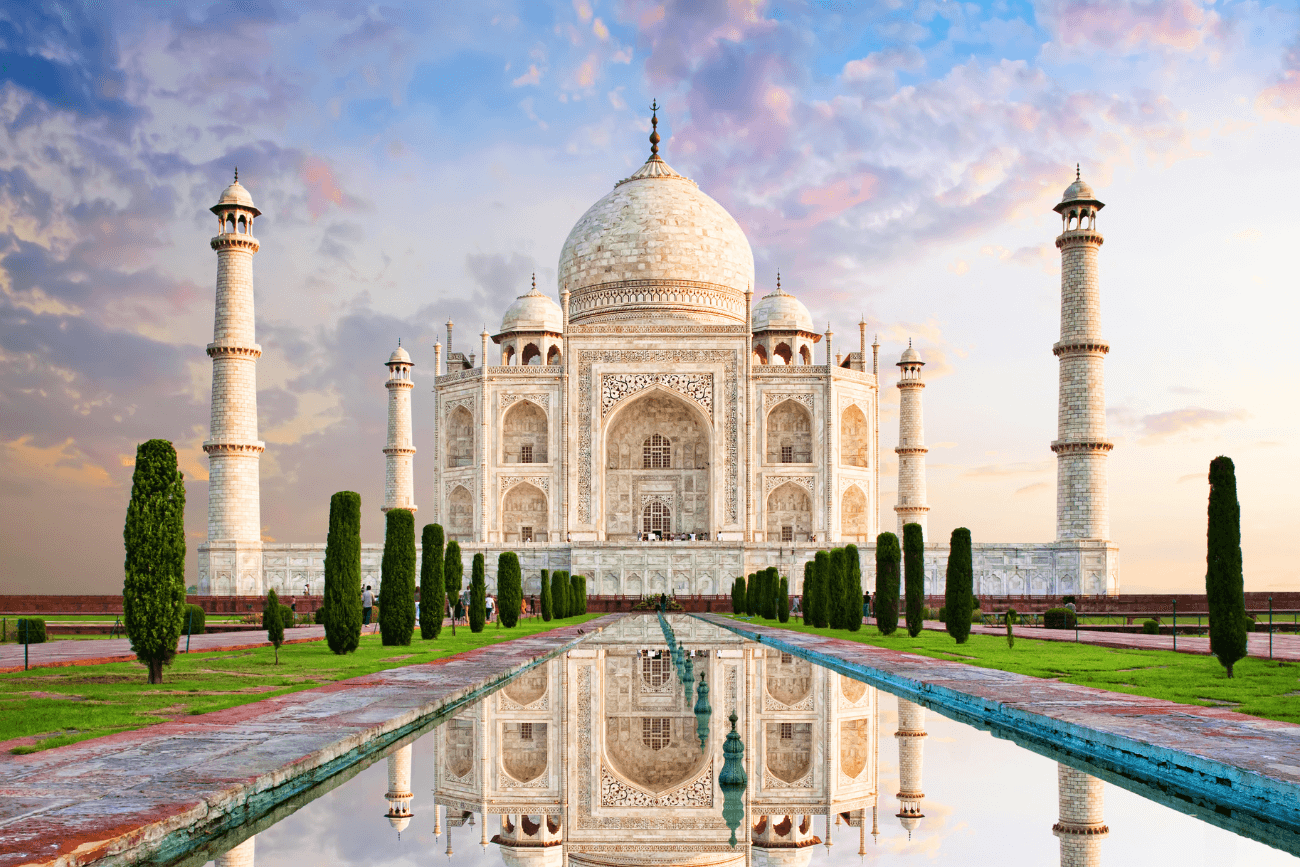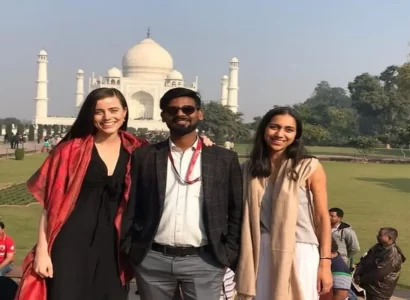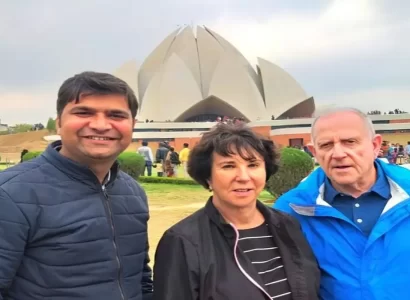The Taj Mahal needs no introduction, yet there is a lot to know about the much-admired Wonder of the world. The pristine white marble monument flaunts its beautiful structure like nothing else and draws admirers of its beauty from around the world. The Taj Mahal is more than a tomb! It’s a story of India’s past, and architectural heritage.
From a traveler’s point of view, here are some of the amazing and must-know things about the Taj Mahal –
History and Significance of the Taj Mahal
The Taj Mahal is a Mughal mausoleum built during the Mughal era in India. It is accredited with titles such as ‘Wonder of the World’, ‘Symbol of Love’, and a ‘UNESCO World Heritage Site’. It is one of the most searched landmarks on the internet and attracts millions of its admirers from around the globe.
The Mughal monument is the zenith of Mughal Architecture and no other monument competes with it in the sense of design symmetry, architectural techniques, and the work of art called ‘Parchin Kari’.
Historical Background

The Mughal Emperor Shah Jahan was married to Arjumand Banu Begum, (Mumtaz Mahal). She was dearly to him and their stories of admiration and affection were popular among the court. She had a role in some court proceedings and was mostly seen with Shah Jahan, the Emperor.
In 1631, while giving birth to a baby, she felt sick and ultimately passed away. The Emperor was shattered with the demise of his beloved! He was heartbroken and there was nothing close that could console him.
In the absence of his beloved companion, his wealth and kingdom felt futile and hence, he decided to give up his worldly pleasures. He stopped wearing clothes that had designs and flowers on it. He stopped using perfumes and started living a modest life.
It is even said that he had plans to quit the kingdom and move to find solace. Though there is no proven evidence to the saying.
He skipped coming to court and didn’t trim his beard. The court was worried about the Emperor.
Soon, a proposal was planned to build a grand mausoleum for Empress Mumtaz Mahal. Shah Jahan was a connoisseur of fine arts, design, and architecture. He wanted to make the tomb of Mumtaz paradisical. He wanted to make it like a painting on the sky, so beautiful that the world would admire its beauty till eternity.
Several architects were called upon from different regions and a plan was laid out. Alongside the Taj Mahal on both sides of the river Yamuna, there were other residences, tombs, and gardens planned.
Without any modern technology, mapping, or machines, the construction of the most beautiful monument was about to begin.
The architectural style of the Taj Mahal
The Taj Mahal follows authentic Mughal architecture with symmetrical designs, and minarets as prominent elements of the building. The monument is made of Makrana White Marble with beautiful artwork on its walls. The other buildings in the Taj Mahal complex are made of Red Sandstone.
The monument follows similar designs to other Mughal monuments such as the Humayun Tomb, Itmad Ud-Daulah, etc. Exact symmetric patterns of the facade, marble inlay art, the minarets elevates the aura of the Taj Mahal.
Materials and Construction technique
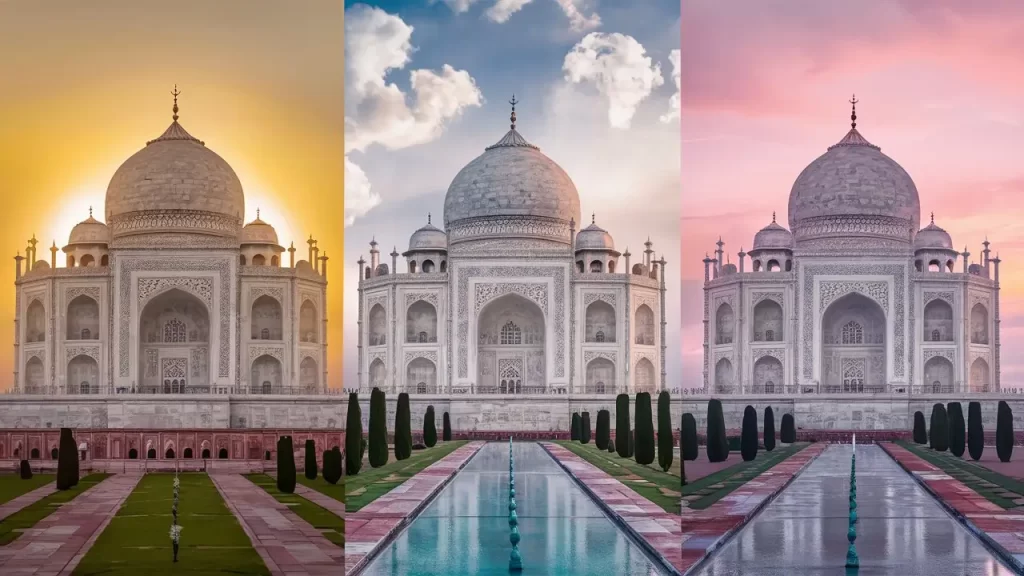
The Taj Mahal is one of the few monuments where the main tomb is made of white marble. This white marble is one of the purest white marble with less than 1% corrosive properties. It was sourced from Makrana, a town near Jaipur. Thousands of bullock carts and elephants carried these heavy stones from Makrana to Agra.
Only the best marble pieces were used for the construction of the tomb. These big stones were cut by hand and then shaped into the pieces we see on the Taj Mahal today. Though this process may seem simple today, it was a herculean task at that time and took several years in the process. It took more than 20 years with 20,000 workers to construct the Taj Mahal.
The Taj Mahal is a complex design if you look at it closely. The marble pieces were fine cut to pieces that would fit perfectly for the tomb since there was no cement and natural resins & glue were used to stick each of them. It is amazing to know that such things still last to date!
Similar to the white marble, several precious and semi-precious stones were sourced from different parts of the world. You can see and touch these stones beautifully engraved on the walls of the Taj Mahal. Jade, Lapis Lazuli, Onyx, Malachite, Sapphire, and Agate are some of the Semi-Precious stones used in the Taj Mahal.
Translucent white marble
The beauty of the Taj Mahal is admired much because of its marble properties. The white Makrana Marble used in the Taj Mahal is translucent and passes light through it. As the first rays of sunlight fall upon the white monument look in pink hues. During the day, it turns in utmost white colour making it a treat to the eyes. The monument turns yellow-golden during the sunset and mystic blue and white during the full moon night.
The fascinating properties of the Taj Mahal amuse its visitors and no wonder why it is called a ‘Wonder of the World’
UNESCO World Heritage Site and a Wonder of the World
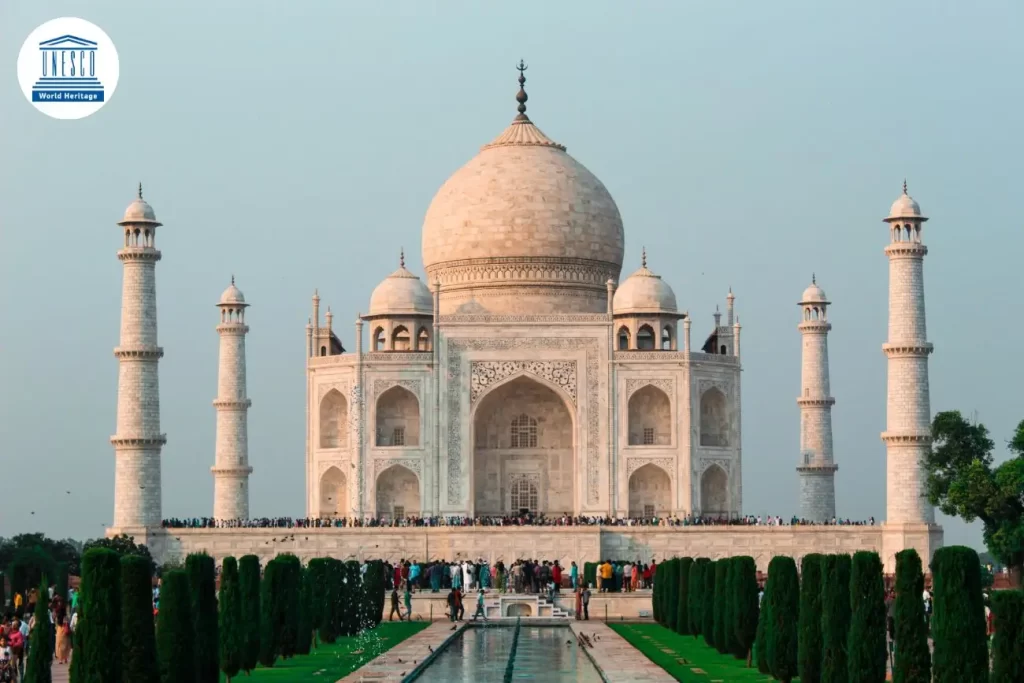
The Taj Mahal was designated as a UNESCO World Heritage Site in 1983 owing to its beautiful architectural style. It is also listed as one of the ‘New Seven Wonders of the World’ and continues to attract people from all over the world. These titles show how the influence of communities and history makes the world an interesting place to live. The Taj Mahal, today attracts millions of both domestic and international visitors and leaves them in awe of its architectural finesse.
Planning to visit the Taj Mahal
If you are planning to visit the Taj Mahal anytime soon, this is for you. The Taj Mahal remains open to the public throughout the year. However, the Autumn and Winter months from September to March are best months to plan your Taj Mahal tour.
Taj Mahal Timings
- The Taj Mahal is open on all days except Fridays.
- Timings: 30 minutes before sunrise to 30 minutes after the sunset. Assume it 6 AM – 6 PM
Entry Fee
- Foreign Tourist – Rs.1100 + Rs.200 (For visiting mausoleum).
- Citizen of SAARC and BIMSTEC Countries – Rs.540 + Rs.200 (For visiting mausoleum).
- Domestic/Indian/OCI Cardholder – Rs.50 + Rs.200 (For visiting mausoleum).
Note:
- Online ticket buyers will get Rs. 5 discount for Indians and Rs.50 for foreign visitors.
- No entry fee for children below 15 years of age (Both Indian and Foreigners).
How to reach the Taj Mahal?
One can reach the Taj Mahal by Road or Railway. The city has no International Airport but is well connected by roads and Railways from India’s capital New Delhi. Check the following train schedule between Delhi and Agra –
- Gatimaan Express from Delhi to Agra
- Shatabdi Express from Delhi to Agra
Also, you can opt for a Private Taxi to Agra from Delhi airport. If you opt for a Private Agra Tour, your commute will be included by your tour operator for your seamless transportation.
Travel tips for first-time visitors
If you are planning to visit the Taj Mahal for the first time, here are some tips for you –
- Go for Tour Packages – Traveling to India is amazing. However, the crowds, traffic, and chaos can make your journey uncomfortable at times. Hence, for a comfortable Taj Mahal exploration, pick tour packages that cover your transportation, accommodation, and monument sightseeing.
- Book flights in advance – It will be better if you book your flight tickets in advance to avoid rush and price hikes.
- Clothing – If you are traveling to Agra during the summers (April – June), carry light cotton clothes, sunglasses, and sunscreens to protect from extreme heat. Carry warm thermals and jackets if you are traveling during the winters.
- Footwear – Carry comfortable shoes as you may have to walk a lot in Taj Mahal complex and other monuments.
Iconic places near the Taj Mahal
The Taj Mahal is surrounded by several other significant monuments that were built during the Mughal era. The entire area was built to make it look and feel paradisical with beautiful gardens, and residences on both sides. Some of these monuments are preserved monuments which you must visit during your Taj Mahal trip.
Agra Fort
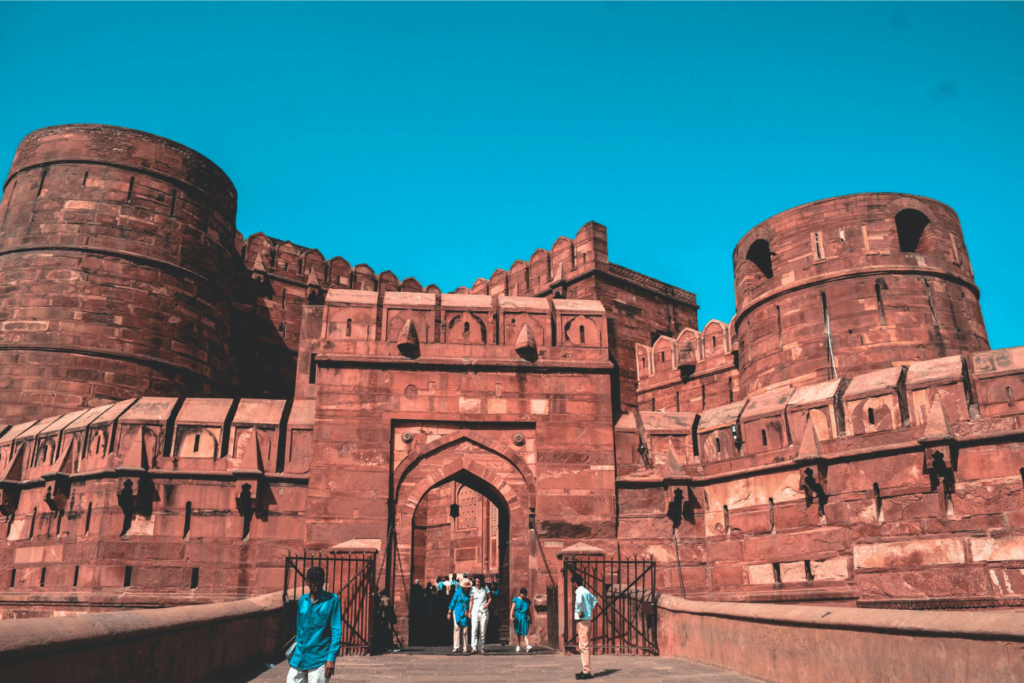
The Agra Fort is a Mughal fort built by the Mughal Emperor Akbar (Shah Jahan’s grandfather). It is a huge fort made of Red Sandstone and includes many buildings from those times. Exploring the Agra Fort is an amazing experience and you get to see the residence of the Mughal kings and their kingdom. Later, Shah Jahan was jailed at Agra Fort by his son Aurangzeb from where he used to see the Taj Mahal and ultimately died there.
Mehtab Bagh:
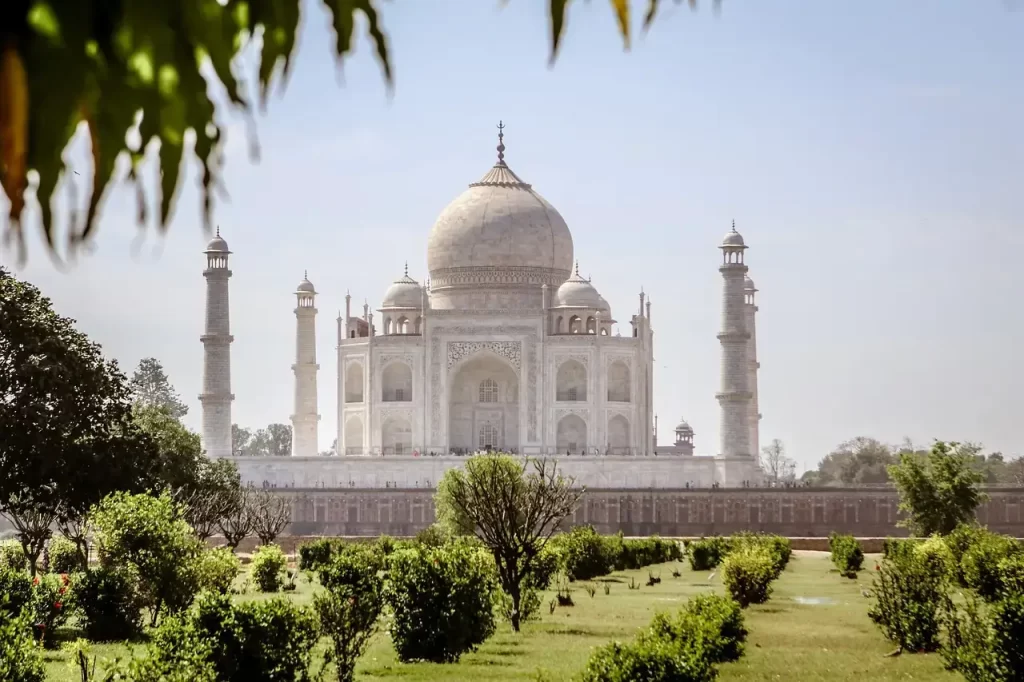
Mehtab Bagh is one of the beautiful gardens built on the river banks of Yamuna on the opposite side of the Taj Mahal. It follows the authentic garden style of Chahar Bagh or X-Axial Garden. One can capture beautiful landscape views of the Taj Mahal from here.
Conclusion
The Taj Mahal transcends time, culture and geography. It is a cherished example of the Mughal architectural excellence. The history of the monument and emotional aspect draws people from all around the globe, making it one of the places to visit on the planet. The Taj also represents India’s history, cultural legacy and stories of the bygone era. When visiting the Taj mahal, make the most of your time here and respect the rules. It is not just a monument, but a journey through history and experience of art, emotion and heritage.
